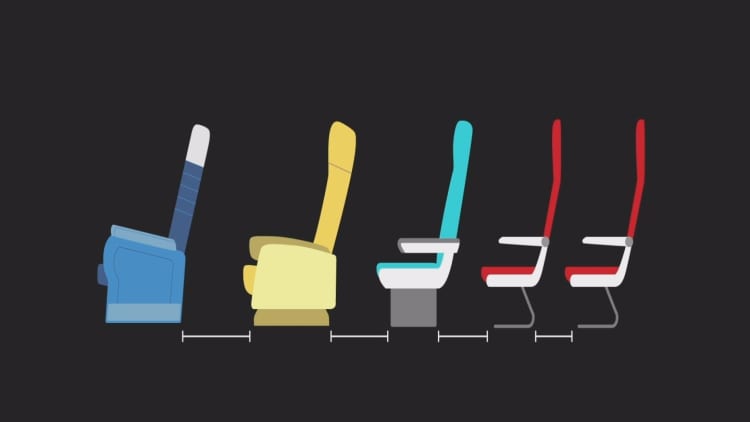It's less than a month into the summer and triple-digit temperatures have already shattered records in many cities across the country, like around Los Angeles area where it hit 114 degrees in Burbank and 120 degrees in Chino on July 6.
That's as hot as last year's brutal summer when temperatures hovered around 120 degrees in Phoenix and prompted American Airlines to cancel more than 40 flights at its hub there. The regional jets that feed big airlines' couldn't operate with temperatures above 118 degrees. The extreme heat that has come with climate change is prompting airplane manufacturers to test their fleets for increasingly hotter temperatures.
While travelers are used to flight cancellations in blizzards, the unpredictable storms and extreme heat of warmer months present airlines — and passengers — with some of the most challenging conditions of the year. The gradual warming of the earth that has come with climate change is causing more frequent and more severe swings in weather patterns across the globe. That means more days of extreme heat that airlines didn't have to worry about before.
"Last summer was a wake-up call for us," said Ross Feinstein, a spokesman for American Airlines, the world's largest carrier by traffic.
Once the busy summer travel season was over, Feinstein said the airline approached Montreal-based Bombardier, the manufacturer of the regional jets that were grounded in the heat wave, to see if the planes could fly at higher temperatures.
The company won that approval from U.S. and Canadian regulatory agencies in May, said Bombardier spokeswoman Nathalie Siphengphet.
The maximum temperature at which Bombardier CRJs can fly depends on altitude, but from Phoenix, it's now around 123 degrees Fahrenheit, up from about 118. Bombardier's competitor, Brazil's Embraer has taken similar steps and its new E190 E2 regional jet, which started service this April, can operate at higher temperatures than previous models.
"Rising temperatures have been an important design consideration for Embraer," the company said in a statement.

Higher temperatures could make flying more unpleasant for travelers. A 2017 University of Reading study based on computer models found that hotter air could increase strong turbulence in the coming decades by generating instabilities in air flows at high altitudes.
"It's normal to break some records every year," said Adam Allgood, a meteorologist at the National Oceanic and Atmospheric Administration. "It’s much easier to break a record high than a record low because the trends are toward warming."
More flights are generally canceled during the winter months than during the summer in the U.S., according to flight-tracking site FlightAware, but thunderstorms can be tough to forecast. Compared with large, slow-moving winter storms, or even hurricanes, thunderstorms can develop suddenly and dissipate within an hour. That can leave passengers in the lurch with long delays when bad flying weather hits big hubs like Delta's in Atlanta or American's that serves Dallas-Fort Worth.
Delta learned that the hard way during a meltdown in April 2017, when thunderstorms lingered over Atlanta longer than expected and it canceled more than 3,000 flights over spring break. Crews were out of position to restaff new flights, frustrating travelers and dragging the problem out for about a week.
Delta has since added staff to its crew-tracking team and enhanced software to predict which crew members might run into cancellations or delays that would further disrupt flights, spokesman Michael Thomas said. That helps it foresee potential problems and make sure needed crew members aren’t flying to destinations where flights can’t take off, which can compound bad-weather chaos, he said. United spokesman Charlie Hobart said the airline has taken similar steps to improve restaffing around unpredictable weather delays.
Delta and American say they have also enhanced self-service applications for passengers to rebook themselves if a flight is canceled. This will be the first summer a feature on American's rebooking tool will be widely available for travelers.
"From a customer perspective, the best place to do that is before they get to the airport," said American Airlines' Feinstein.
Airlines routinely allow travelers to travel on different dates ahead of a blizzard or hurricane, or if or even if thunderstorms are expected. In warmer months, there's often less lead time.
On "the bridge" at its cavernous operations hub Fort Worth, American's customer service agents who track airline mentions on social media sit near those who make the call to cancel or delay a flight — cutting the response time between an angry tweet and getting a customer rebooked on another flight.



